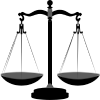
The Margin of Error on Damages Calculations Based on Sample Survey Data in Class Action Wage and Hour Cases
$25.00
Jeffrey S. Petersen and Phillip H. Allman. 2019. The Margin of Error on Damages Calculations Based on Sample Survey Data in Class Action Wage and Hour Cases. Journal of Legal Economics 25(1–2): pp. 139–155.
The margin of error associated with sample survey data has been a persistently controversial statistic when measuring class-wide damages in wage and hour cases, at least in California, if not generally. The source of controversy stems from two legal decisions which are thought to maintain that certain margins of error with respect to the sample mean were too high. The two cases, both from California, are Bell v. Farmers Insurance and Duran v. U.S. Bank. The Bell court found a relative margin of error of 32.4 percent was unacceptable whereas the Duran court found a relative margin of error of 43.3 percent was unacceptable. The Bell court also found a 9.6 percent relative margin of error acceptable. However, neither of these legal decisions explicitly specified the acceptable range for the margin of error. Moreover, these legal decisions do not address the potential remedies for a margin of error that may be considered too high. This article discusses a remedy that provides the courts with a projection of damages that allows them to make an award to the class members in accord with generally accepted statistical science that protects and balances the welfare of defendants and plaintiffs.
| Authors | Jeffrey S. Petersen, Phillip H. Allman |
|---|---|
| Publication Year | 2019 |
